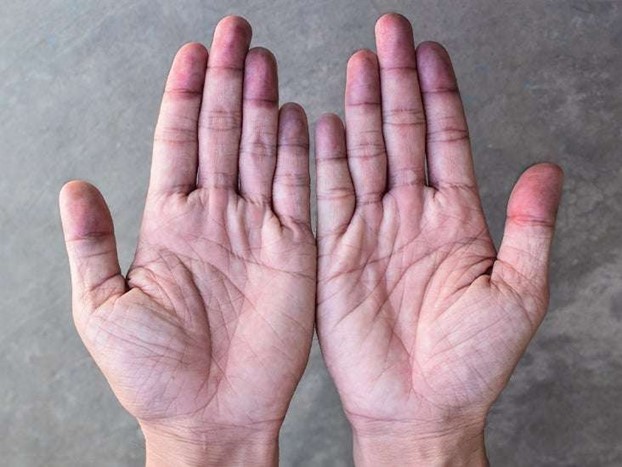A nurse in an emergency department is caring for a child who reports being sexually abused by a family member. Which of the following actions should the nurse take?
Reassure the child that no one will be told about the abuse.
Ensure that multiple nurses are present for the physical examination.
Explain to the child what will happen when the abuse is reported.
Use leading statements to obtain information from the child.
The Correct Answer is C
This is because the nurse should provide honest and accurate information to the child about the reporting process and the possible outcomes, such as legal actions, investigations, or removal from the home.
This can help the child feel more prepared and less anxious about what will happen next. The nurse should also reassure the child that the abuse is not their fault and that they did the right thing by telling someone.
Choice A is wrong because reassuring the child that no one will be told about the abuse is unethical and illegal.
The nurse has a mandatory duty to report any suspected or confirmed cases of child abuse to the appropriate authorities, such as child protective services or law enforcement. Keeping the abuse a secret can also endanger the child’s safety and well-being, as well as prevent them from receiving the necessary medical and psychological care.
Choice B is wrong because ensuring that multiple nurses are present for the physical examination can increase the child’s fear, embarrassment, or discomfort.
The nurse should minimize the number of people involved in the examination and only include those who are essential for providing care or collecting evidence. The nurse should also explain to the child what will be done during the examination and obtain their consent before proceeding.
Choice D is wrong because using leading statements to obtain information from the child can influence their responses and affect the validity of their testimony.
The nurse should use open-ended questions and avoid suggesting or implying any details about the abuse. The nurse should also document the child’s statements verbatim and avoid interpreting or paraphrasing them.
Nursing Test Bank
Naxlex Comprehensive Predictor Exams
Related Questions
Correct Answer is D
Explanation

Cyanosis is a bluish discoloration of the skin and mucous membranes due to inadequate oxygenation of the blood. It is more difficult to detect in people who have dark skin, so the nurse should look for cyanosis in areas where the skin is thinner and the blood supply is richer, such as the palms of the hands, the lips, the gums, and around the eyes.
These areas are less affected by melanin, the pigment that gives skin its color.
Choice A is wrong because an area of trauma may have bruising or inflammation that can mask cyanosis.
Choice B is wrong because the sacrum is not a good site to assess for cyanosis in any skin tone, as it is prone to pressure ulcers and poor circulation.
Choice C is wrong because the shoulders are not a mucous membrane and may have more melanin than other areas of the body.
Correct Answer is A
Explanation
This statement shows respect for the client’s interest in alternative therapies and offers guidance on how to choose a reliable and qualified provider. Alternative therapies can provide some benefits for people with rheumatoid arthritis, such as reducing pain, inflammation, and stiffness, but they should be used as a complement to conventional treatments and not as a substitute.
Choice B is wrong because it implies that the client has no role in deciding their own treatment plan and that alternative therapies are not worth considering.
This may discourage the client from sharing their preferences and concerns with the provider.
Choice C is wrong because it suggests that online support groups are a reliable source of information about alternative remedies, which may not be true.
Online sources may contain inaccurate, misleading, or harmful information that could jeopardize the client’s health and safety.
Choice D is wrong because it encourages the client to try any therapy that fits their personal belief system, without considering the evidence, effectiveness, or potential risks of such therapies. Some alternative therapies may interact with medications, cause side effects, or worsen the condition.
Normal ranges for rheumatoid arthritis are not applicable to this question, as it is not asking about laboratory values or disease activity measures. However, some common tests used to diagnose and monitor rheumatoid arthritis include erythrocyte sedimentation rate (ESR), C- reactive protein (CRP), rheumatoid factor (RF), anti-cyclic citrullinated peptide (anti-CCP) antibodies, and joint ultrasound or X-ray.
The normal ranges for these tests may vary depending on the laboratory and the method used.
Whether you are a student looking to ace your exams or a practicing nurse seeking to enhance your expertise , our nursing education contents will empower you with the confidence and competence to make a difference in the lives of patients and become a respected leader in the healthcare field.
Visit Naxlex, invest in your future and unlock endless possibilities with our unparalleled nursing education contents today
Report Wrong Answer on the Current Question
Do you disagree with the answer? If yes, what is your expected answer? Explain.
Kindly be descriptive with the issue you are facing.
